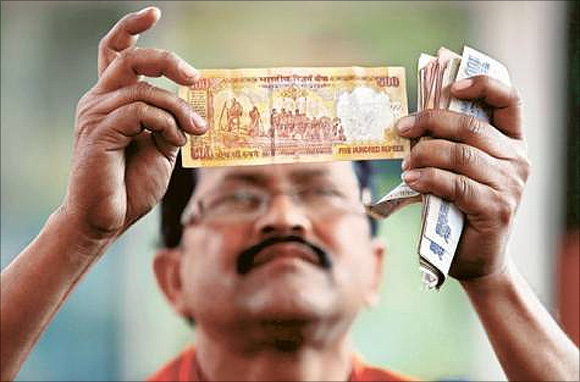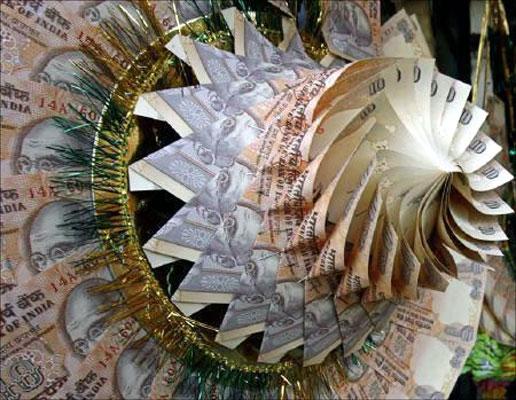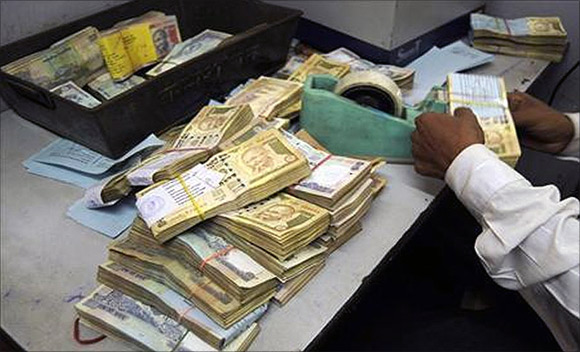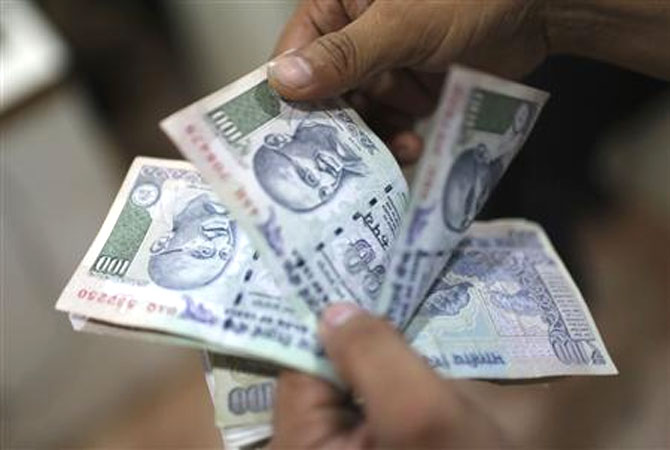 | « Back to article | Print this article |
Inflation at 5-month high of 6.01% in May
Rising prices of food and beverages like coffee, tea, poultry, fish and vegetables pushed up inflation to 5-month high of 6.01 per cent in May.
The Wholesale Price Index-based inflation was 5.20 per cent in April and 4.58 per cent a year ago in May.
According to the data released by the Commerce and Industry Ministry on Monday, food items which became expensive during the month include coffee (23 per cent), poultry chicken (7 per cent), fish-inland (6 per cent) and tea and fruits and vegetables (4 per cent each).
The other items in the primary articles segment which became dearer are condiments and spices, fish-marine, urad and masur (3 per cent each), rice and moong (2 per cent each) and milk, barley, pork, mutton and arhar (1 per cent each).
Click NEXT to read further. . .
Inflation at 5-month high of 6.01% in May
However, the prices of maize came down by five per cent), wheat and ragi by 2 per cent each and egg, jowar and gram by one per cent each.
In the 'Non-Food Articles' category, guar seed became expensive by 13 per cent, soyabean (10 per cent), copra (coconut) (8 per cent), tobacco (7 per cent), raw jute (5 per cent), raw silk (3 per cent), mesta (2 per cent) and groundnut seed, raw cotton and cotton seed (1 per cent each).
However, the data showed, the price of gingelly seed and flowers declined by 8 per cent each, fodder by 3 per cent and linseed, castor seed and sunflower by 1 per cent.
The inflation figures for March was revised to 6 per cent from 5.70 per cent reported earlier.
Click NEXT to read further. . .
Inflation at 5-month high of 6.01% in May
The previous high was 6.4 per cent in December.
In the manufactured goods category, food items which became expensive include tea leaf (unblended) (11 per cent), tea leaf (blended) (8 per cent), gur and bakery products (4 per cent each), gola (cattle feed) and processed prawn (3 per cent each), copra oil and ghee (2 per cent each) and mixed spices, khandsari and oil cakes (1 per cent each).
However, the price of tea dust (unblended) declined by 3 per cent, groundnut oil and gingelly oil (2 per cent each) and soyabean oil and sunflower oil (1 per cent each).
The data further revealed that dried tobacco became expensive by 8 per cent and cigarette by 2 per cent.
Click NEXT to read further. . .
Inflation at 5-month high of 6.01% in May
In the textiles group category, man made fabric, jute sacking cloth, jute sacking bag and cotton fabric became dearer by one per cent each, though prices of jute yarn declined by 4 per cent and tyre cord fabric and gunny and hessian cloth by one per cent each.
Similar price increase was noticed in other categories like wood and wood products, paper and paper products, leather and leather products, rubber and plastic products and chemicals and chemical products.
Items in metals, machinery and machine tools and transport equipment categories too became expensive during May pushing up the overall inflation rate.



